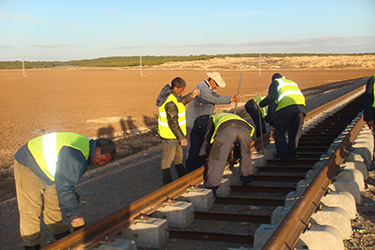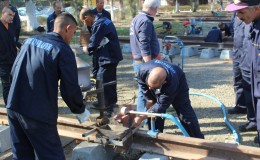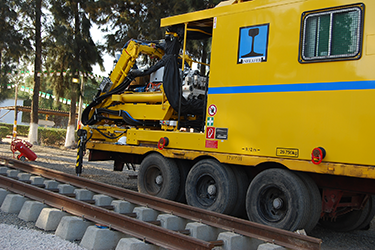How Crossing Games Inspire Real-World Navigation Skills 2025
1. The Cognitive Skills Behind Crossing Games and Their Developmental Impact
a. How do crossing games enhance spatial awareness and problem-solving abilities?
Crossing games like Frogger and modern variants challenge players to interpret dynamic environments, requiring quick mental mapping of obstacles and safe routes. According to cognitive research, these tasks actively engage the brain’s spatial reasoning centers, particularly the hippocampus and parietal lobes. For example, players learn to predict traffic flow or pedestrian movement patterns, similar to real-world street crossings. This mental simulation fosters an improved capacity for mental rotation and spatial visualization, skills crucial for daily navigation tasks such as finding routes or packing efficiently.
b. The role of pattern recognition and anticipation in mastering crossing challenges
Successful crossing requires recognizing recurring patterns—such as traffic light cycles or pedestrian signals—and anticipating future movements. Studies indicate that players develop a form of probabilistic reasoning, enabling them to make quick decisions under pressure. Modern crossing games incorporate complex patterns, encouraging players to develop a keen eye for environmental cues, which translates into better hazard assessment and decision-making abilities in real-world scenarios, like crossing busy streets or navigating unfamiliar environments.
c. Differences in cognitive engagement between early and modern crossing games
Early games such as Frogger primarily focused on timing and reflexes, engaging mostly the motor response system. In contrast, modern crossing games incorporate layered challenges that demand strategic planning, memory, and adaptive problem-solving. Neuropsychological studies suggest that this evolution enhances higher-order cognitive functions, including executive control and flexible thinking—skills vital for complex navigation in real-world settings, such as urban commuting or outdoor exploration.
2. Transferable Navigation Skills Gained from Crossing Games
a. How players develop real-world skills such as route planning and hazard assessment
Crossing games cultivate the ability to strategize routes by evaluating obstacles and timing movements precisely. These skills mirror real-world activities like planning a safe walking route through busy streets or navigating outdoor terrains. For instance, players become adept at assessing when to cross based on traffic patterns, a skill directly applicable to pedestrian safety and urban navigation.
b. The connection between in-game timing precision and real-world decision-making under pressure
Timing accuracy in crossing games fosters quick, decisive actions—a critical component in emergency situations like avoiding hazards or crossing intersections safely. Research shows that players conditioned by such games develop heightened situational awareness and better stress management, which are essential for real-world tasks that require rapid judgment calls, such as responding to unexpected obstacles or changes in environment.
c. Case studies: Bridging virtual crossing skills to practical navigation scenarios (e.g., crossing streets, outdoor navigation)
A notable example includes children who play educational crossing games and subsequently demonstrate improved street-crossing safety. In a 2022 study, children trained with augmented reality crossing simulations exhibited faster reaction times and fewer crossing errors in real-world tests. Similarly, outdoor explorers and hikers benefit from the pattern recognition and hazard anticipation skills developed through virtual crossing tasks, enabling safer and more confident navigation in complex environments.
3. The Psychological and Motor Skill Development through Crossing Games
a. Improving reaction times and hand-eye coordination via gameplay
Fast-paced crossing challenges require players to synchronize visual cues with motor responses, directly enhancing reaction speeds and fine motor control. Studies involving gamers demonstrate significant improvements in hand-eye coordination, which benefits activities such as driving, sports, and surgical procedures.
b. Building patience and strategic thinking through increasingly complex crossing challenges
As crossing games escalate in difficulty, players learn to exercise patience and develop long-term strategies. For example, avoiding impulsive moves in complex scenarios fosters perseverance and calculated decision-making—attributes that are transferable to real-world situations like navigating crowded spaces or managing time-sensitive tasks.
c. The influence of game difficulty progression on real-world perseverance and adaptability
Progressive difficulty levels encourage players to adapt their strategies and persist despite setbacks. This iterative learning process enhances resilience and the capacity to handle unpredictable challenges in outdoor navigation, such as unexpected detours or environmental hazards.
4. Innovative Technologies and Their Role in Enhancing Crossing Game Learning
a. The integration of augmented reality (AR) and virtual reality (VR) to simulate real-world crossing environments
AR and VR provide immersive environments where players can practice crossing in contexts that mimic real-world settings. For example, VR crossing simulations allow users to navigate busy urban streets safely, refining their spatial awareness and decision-making skills before encountering actual hazards.
b. How motion sensors and AI-driven feedback improve spatial navigation training
Advanced sensors and AI enable real-time feedback on players’ movements and timing, fostering precise control and awareness. Such systems can adapt difficulty levels based on individual performance, providing personalized training that accelerates skill acquisition for tasks like pedestrian navigation or outdoor trekking.
c. Potential for personalized navigation skill development through adaptive crossing game platforms
Adaptive platforms analyze user performance to tailor challenges, ensuring optimal learning progression. This customization supports learners of all ages and abilities, making crossing games a versatile tool for lifelong navigation skill development.
5. From Play to Practice: Designing Educational Crossing Games for Real-World Navigation
a. Principles for creating effective training tools rooted in crossing game mechanics
Effective educational crossing games should integrate realistic scenarios, incremental difficulty, and immediate feedback. Incorporating real-world hazard cues and decision points ensures that skills acquired transfer seamlessly to actual environments. For instance, games that simulate urban crossings with varying traffic densities help learners adapt to different contexts.
b. Examples of existing educational programs leveraging crossing game concepts
Programs like SafeCross utilize gamified modules to teach children street safety, combining virtual crossing challenges with real-world practice. Schools and community centers increasingly adopt AR-based solutions that reinforce navigation skills through interactive play.
c. Challenges and opportunities in translating gaming skills into real-world navigation curricula
While gaming provides engaging platforms, translating these skills into practical curricula requires careful curriculum design, ensuring contextual relevance and safety. Opportunities include integrating gaming with outdoor activities and using data analytics to personalize learning pathways.
6. Bridging Virtual Challenges and Physical Environments: Future Directions
a. Emerging trends in crossing game design aimed at real-world skill transfer
Future crossing games are increasingly emphasizing real-time environmental data integration, such as live traffic conditions, to create more realistic training scenarios. Gamification of outdoor navigation, including GPS-based challenges, is also expanding.
b. The role of community and multiplayer crossing games in social navigation skill development
Multiplayer platforms foster social learning, where players develop communication and teamwork skills while navigating shared challenges. Such interactions enhance spatial awareness and cooperative problem-solving, vital for group navigation tasks.
c. How future innovations could create seamless transitions from digital crossing challenges to real-world mastery
Integrating sensors, AI, and real-world data will enable adaptive systems that bridge gaming with physical environments, creating a continuous learning loop. For example, smartphone apps could analyze player movements during real crossings, offering tailored feedback and progressively increasing complexity.
7. Connecting Back to the Parent Theme: The Evolution and Future of Crossing Games in Skill Development
a. Reflection on how the historical progression of crossing games has laid the groundwork for modern navigation training tools
From simple arcade titles like Frogger to sophisticated AR/VR systems, crossing games have consistently evolved to challenge cognitive and motor skills. This progression underscores the importance of iterative design, where each generation of games builds on previous insights to enhance real-world applicability.
b. The importance of understanding game design evolution to innovate in real-world skill transfer
By analyzing how crossing challenges have become more complex and realistic, developers and educators can craft targeted training modules that mirror real environments, ensuring skills are effectively transferred and retained.
c. Final thoughts on the ongoing relationship between crossing game development and practical navigation expertise
As technology advances, crossing games will continue to serve as vital bridges between virtual practice and real-world mastery. Their evolution reflects an ongoing commitment to leveraging play for practical skill development, ensuring that future generations can navigate safely and confidently in an increasingly complex world.





